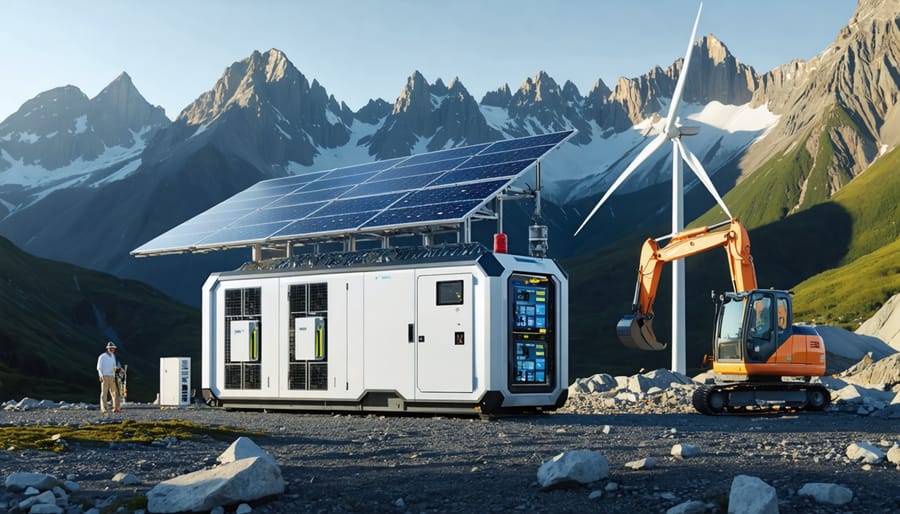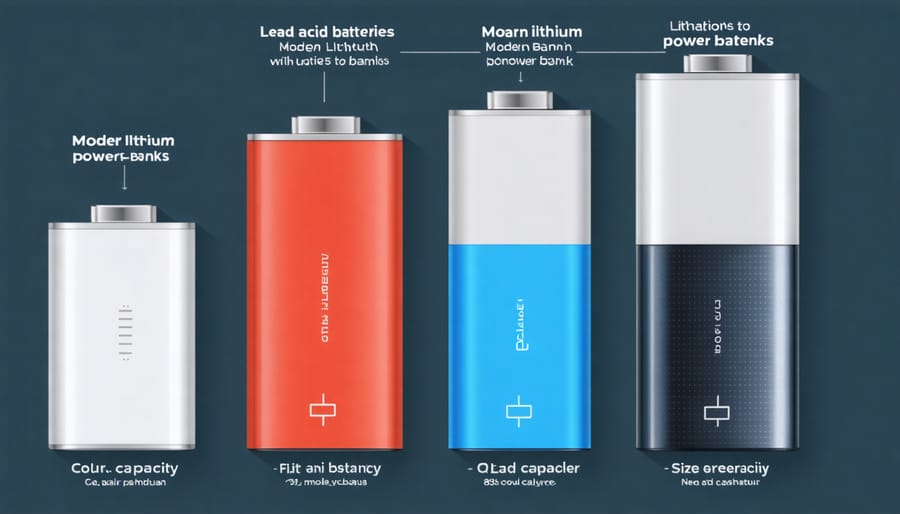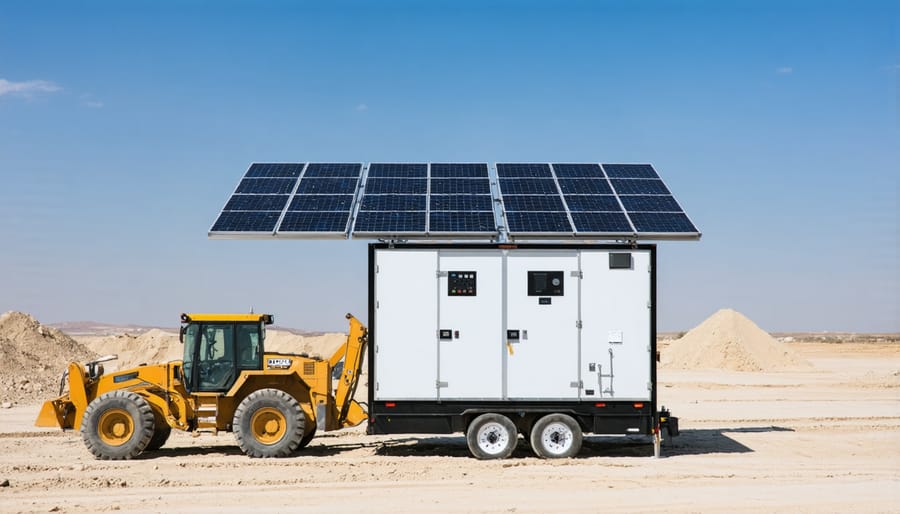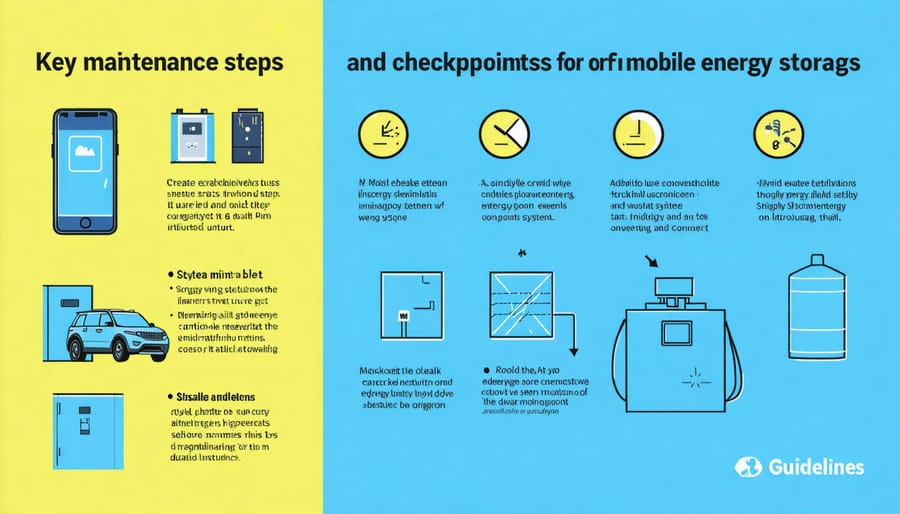Portable Power Revolution: Mobile Energy Storage Solutions Transforming Off-Grid Living

Mobile energy storage systems are revolutionizing how we power our world beyond the grid. From construction sites in remote Alpine regions to emergency response units across European cities, portable power solutions have become essential infrastructure for modern operations. These systems, combining advanced battery technology with smart management systems, enable businesses and communities to maintain crucial operations wherever reliable power is needed.
The rapid evolution of energy storage technology has transformed simple battery banks into sophisticated power hubs capable of supporting entire microgrids. Today’s mobile storage solutions integrate seamlessly with renewable energy sources, particularly solar and wind installations, creating resilient power networks that adapt to changing demands. For European businesses navigating the transition to sustainable operations, these systems offer a practical pathway to energy independence while meeting strict EU environmental standards.
As we face increasing climate uncertainties and growing energy demands, mobile storage systems serve as critical components in our energy security strategy. They provide the flexibility to deploy power resources quickly, maintain operations during grid disruptions, and support the expansion of renewable energy infrastructure across diverse geographical locations. Understanding these systems’ capabilities and applications is essential for organizations planning their energy future in an increasingly mobile and sustainable world.
The Evolution of Mobile Energy Storage Technology
From Lead-Acid to Lithium: The Technology Leap
The evolution from lead-acid to lithium-ion batteries represents a significant leap in mobile energy storage technology. Traditional lead-acid batteries, while reliable and cost-effective, are heavy and offer limited energy density. In contrast, modern lithium-ion solutions deliver up to four times the energy density while weighing considerably less, making them ideal for mobile applications.
Lithium batteries excel in several key areas: they charge faster, maintain stable voltage throughout discharge, and offer superior cycle life—typically lasting 3000-5000 cycles compared to 500-800 cycles for lead-acid alternatives. They also perform better in varying temperature conditions, a crucial advantage for European climate variations.
The shift to lithium technology brings significant environmental benefits too. These batteries contain no toxic lead, require less maintenance, and have a smaller carbon footprint over their lifecycle. While the initial investment is higher, the total cost of ownership often proves more economical due to longer lifespan and improved efficiency.
For mobile applications, lithium batteries’ compact size and lighter weight translate to increased portability and reduced transport costs, making them the preferred choice for modern energy storage solutions.

Smart Integration with Renewable Sources
Mobile energy storage systems excel at integrating with renewable energy sources, particularly with off-grid solar systems and wind installations. These systems use advanced power management controllers to optimize energy capture during peak production periods, storing excess power for use when renewable sources are less active.
The integration process relies on smart inverter technology that automatically adjusts to varying input voltages from solar panels and wind turbines. This flexibility ensures smooth power flow and maintains system stability, even during rapid changes in weather conditions. Modern mobile storage units feature bi-directional charging capabilities, allowing them to both store renewable energy and feed it back into local microgrids when needed.
For maximum efficiency, these systems employ predictive algorithms that analyze weather patterns and energy consumption habits. This intelligence helps optimize charging cycles and energy distribution, ensuring reliable power supply while maximizing the use of renewable sources. The result is a more resilient and sustainable energy ecosystem that can adapt to changing environmental conditions and energy demands.
Practical Applications in Remote Settings
Remote Work Sites and Construction
Mobile energy storage systems have revolutionized how construction projects and temporary work sites manage their power needs, offering flexible remote location energy solutions that align with European sustainability standards. These portable units provide reliable power for equipment, lighting, and site facilities while reducing reliance on traditional diesel generators.
Construction companies across Europe are increasingly deploying mobile storage systems to power everything from electric cranes and power tools to site offices and security systems. These units can be easily repositioned as construction phases progress, ensuring optimal power distribution throughout the project timeline.
The systems prove particularly valuable in heritage renovation projects and urban construction sites where noise restrictions apply. By storing energy during off-peak hours and delivering silent operation, mobile storage helps contractors comply with local regulations while maintaining productivity.
For temporary events and pop-up workstations, these storage solutions offer rapid deployment capabilities and seamless integration with existing power infrastructure. They can be configured to work alongside renewable energy sources, such as temporary solar installations, creating hybrid power systems that maximize efficiency and minimize environmental impact.
Safety features include weather-resistant enclosures, integrated monitoring systems, and compliance with EU construction site safety standards, ensuring reliable operation in challenging conditions while protecting both workers and equipment.

Emergency Response and Disaster Relief
Mobile energy storage systems play a crucial role in emergency response and disaster relief operations across Europe and beyond. These portable power solutions provide essential electrical support when traditional infrastructure fails, enabling emergency services to maintain critical operations and deliver humanitarian aid effectively.
During natural disasters, such as floods, storms, or earthquakes, mobile energy storage units serve as reliable power sources for emergency medical facilities, communication systems, and temporary shelters. Their rapid deployment capability allows rescue teams to establish operational bases quickly in affected areas, powering essential equipment like medical devices, water purification systems, and emergency lighting.
The flexibility of mobile storage solutions proves particularly valuable in remote or severely impacted locations where grid restoration may take weeks or months. These systems can be efficiently transported by road, air, or sea, ensuring swift response times during crisis situations. Many units are designed with robust weatherproof casings and can operate in extreme conditions, making them ideal for emergency scenarios.
European emergency response organisations increasingly integrate mobile energy storage into their disaster preparedness plans. These systems often incorporate solar charging capabilities, ensuring sustainable power generation during extended relief operations. The combination of reliability, portability, and clean energy generation makes mobile storage an indispensable tool in modern disaster management strategies.
For humanitarian missions, these units help establish temporary infrastructure, supporting everything from mobile hospitals to emergency communication centres, ensuring continuous power supply for life-saving operations.
Selecting the Right Mobile Storage Solution
Capacity and Power Requirements
Calculating power requirements for mobile energy storage systems requires careful consideration of both immediate and future energy needs. Start by listing all devices and equipment that will draw power, noting their wattage requirements and estimated daily usage hours. For residential applications, essential loads typically include lighting, refrigeration, and basic electronics, while commercial deployments might incorporate industrial equipment or mobile microgrid systems.
To determine total daily energy consumption, multiply each device’s wattage by its hours of use and sum these values. Include a 20-30% buffer for unexpected loads and system inefficiencies. For example, if your daily consumption calculation shows 5 kWh, plan for 6-6.5 kWh of storage capacity.
Consider peak power demands when multiple devices operate simultaneously. A 2000W inverter might suffice for basic household needs, but commercial applications could require 5000W or more. Battery capacity should align with these requirements while accounting for depth of discharge limitations – most lithium systems allow 80% discharge, while lead-acid batteries typically permit only 50%.
Temperature variations affect battery performance, particularly in European climates. Cold weather can reduce capacity by up to 20%, while extreme heat accelerates degradation. Choose storage systems rated for your local temperature range and installation environment.
For sustainability and longevity, factor in future expansion possibilities. Many users find their energy needs increase by 20-30% within the first few years of system installation. Selecting slightly larger capacity than current calculations suggest can prove cost-effective long-term, avoiding the need for early system upgrades.
Durability and Environmental Considerations
Mobile energy storage systems must withstand diverse environmental conditions while maintaining optimal performance and longevity. In the European context, where weather patterns can range from Mediterranean heat to Nordic cold, durability becomes a crucial consideration. These systems typically feature robust IP65 or IP67 rated enclosures, protecting vital components from dust, rain, and other environmental factors.
Temperature management plays a vital role in system longevity. Modern mobile storage solutions incorporate advanced thermal management systems, ensuring stable operation between -20°C and 45°C, which covers most European climate zones. Some premium units feature active cooling systems and thermal insulation, extending battery life and maintaining efficiency across seasons.
Environmental sustainability is equally important. Many manufacturers now use recyclable materials in their construction, and systems are designed for easy component replacement rather than complete unit disposal. The latest generation of mobile storage solutions demonstrates improved lifecycle assessment scores, with some units achieving up to 80% recyclability rates.
Shock resistance and vibration protection are essential for transport and rough terrain deployment. Quality systems feature reinforced casings and internal shock-absorbing mechanisms, allowing safe transportation across challenging landscapes without compromising functionality.
Regular maintenance requirements have been significantly reduced through smart monitoring systems that alert users to potential issues before they become critical. This predictive approach helps extend system lifespan while minimizing environmental impact through unnecessary component replacement.
When selecting a mobile energy storage system, consider the specific environmental challenges of your intended deployment location and ensure the chosen solution meets relevant European durability standards and ecological certifications.
Installation and Maintenance Best Practices
Setup and Integration Guidelines
Begin your mobile energy storage integration with a thorough site assessment, considering power requirements, available space, and local regulations. First, identify optimal placement for your storage unit, ensuring adequate ventilation and protection from extreme weather conditions.
For installation, start by preparing a level, stable surface – ideally a concrete pad or reinforced platform. Ensure the area is easily accessible for maintenance and has proper drainage. Install necessary safety equipment, including fire suppression systems and emergency shut-off mechanisms, in accordance with European safety standards.
Connect your storage system to existing power infrastructure through a qualified technician. This typically involves installing an inverter, charge controller, and monitoring system. For solar integration, ensure compatibility between your panels and storage solution. Modern systems often include smart monitoring capabilities, allowing remote management via smartphone applications.
Consider these essential integration tips:
– Implement a robust battery management system
– Install surge protection devices
– Maintain proper cable sizing and routing
– Enable remote monitoring capabilities
– Schedule regular maintenance checks
Documentation is crucial – maintain detailed records of system specifications, warranty information, and emergency procedures. Train relevant personnel on basic operation and safety protocols. For optimal performance, establish a regular maintenance schedule aligned with manufacturer recommendations and local regulations.
Remember to register your system with local authorities if required and ensure compliance with grid connection requirements when applicable.

Maintenance and Longevity
Regular maintenance is crucial for maximizing the lifespan and performance of mobile energy storage systems. Key maintenance tasks include periodic inspection of battery connections, cleaning of solar panels (if integrated), and monitoring system performance through built-in diagnostics. For systems incorporating thermal storage solutions, checking insulation integrity and heat exchange components is essential.
To extend system longevity, implement a structured maintenance schedule that includes quarterly deep-cycle battery conditioning, annual professional inspections, and immediate addressing of any performance alerts. Modern mobile storage units typically feature smart monitoring systems that help predict maintenance needs and prevent potential issues before they arise.
Environmental factors significantly impact system life expectancy. Protect units from extreme temperatures, maintain proper ventilation, and ensure installation locations are free from excessive moisture or dust. For European climates, consider additional weatherproofing measures during winter months.
Battery replacement planning is crucial for long-term operation. Most high-quality lithium-ion systems maintain 80% capacity after 10 years with proper care, while lead-acid variants may require replacement every 5-7 years. Keep detailed maintenance records and monitor degradation patterns to optimize replacement timing and maintain system efficiency throughout its lifecycle.
Mobile energy storage systems have revolutionised how we approach power distribution and energy management across Europe. From supporting renewable energy integration to enabling off-grid operations, these solutions have proven instrumental in advancing sustainable practices and energy independence. The technology continues to evolve rapidly, with improvements in battery capacity, charging efficiency, and smart management systems making mobile storage increasingly practical and cost-effective.
Looking ahead, the future of mobile energy storage appears particularly promising. Experts predict significant advances in battery technology, with new materials and designs potentially doubling current storage capacities within the next decade. The integration of artificial intelligence and machine learning will further enhance system efficiency and predictive maintenance capabilities, while decreasing operational costs.
For European businesses and homeowners, mobile energy storage represents a crucial component in the transition towards sustainable energy systems. As renewable energy adoption increases and grid modernisation continues, these solutions will play an ever-more-vital role in ensuring power reliability and flexibility. The growing focus on circular economy principles is also driving innovations in battery recycling and sustainable manufacturing processes.
The combination of technological advancement, regulatory support, and increasing environmental awareness suggests that mobile energy storage will remain at the forefront of Europe’s energy transformation. This evolution will continue to provide new opportunities for energy independence, grid stability, and sustainable power management across the continent.
Leave a Reply